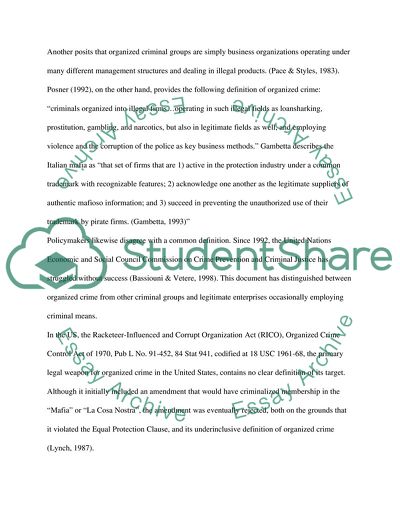Cite this document
(Structures of Organised Crime Assignment Example | Topics and Well Written Essays - 2000 words, n.d.)
Structures of Organised Crime Assignment Example | Topics and Well Written Essays - 2000 words. Retrieved from https://studentshare.org/social-science/1536160-organised-crime-critically-assess-the-extent-to-which-gangs-can-be-said-to-be-organised-around-clearly-defined-and-hierarchical-organisation-structures
Structures of Organised Crime Assignment Example | Topics and Well Written Essays - 2000 words. Retrieved from https://studentshare.org/social-science/1536160-organised-crime-critically-assess-the-extent-to-which-gangs-can-be-said-to-be-organised-around-clearly-defined-and-hierarchical-organisation-structures
(Structures of Organised Crime Assignment Example | Topics and Well Written Essays - 2000 Words)
Structures of Organised Crime Assignment Example | Topics and Well Written Essays - 2000 Words. https://studentshare.org/social-science/1536160-organised-crime-critically-assess-the-extent-to-which-gangs-can-be-said-to-be-organised-around-clearly-defined-and-hierarchical-organisation-structures.
Structures of Organised Crime Assignment Example | Topics and Well Written Essays - 2000 Words. https://studentshare.org/social-science/1536160-organised-crime-critically-assess-the-extent-to-which-gangs-can-be-said-to-be-organised-around-clearly-defined-and-hierarchical-organisation-structures.
“Structures of Organised Crime Assignment Example | Topics and Well Written Essays - 2000 Words”. https://studentshare.org/social-science/1536160-organised-crime-critically-assess-the-extent-to-which-gangs-can-be-said-to-be-organised-around-clearly-defined-and-hierarchical-organisation-structures.


